Cottage Garden Design Ideas to Create a Charming Garden
Creating a traditional cottage garden is a great way to bring a charming, old-fashioned feel to your outdoor space. I’m sharing some cottage garden design ideas so you can create your own perfectly charming cottage garden feel.
Have you heard the term “cottage garden” or “cottage-style garden”? I’m here today to share this gardening style that knows no rules and where imperfection has its own special beauty.
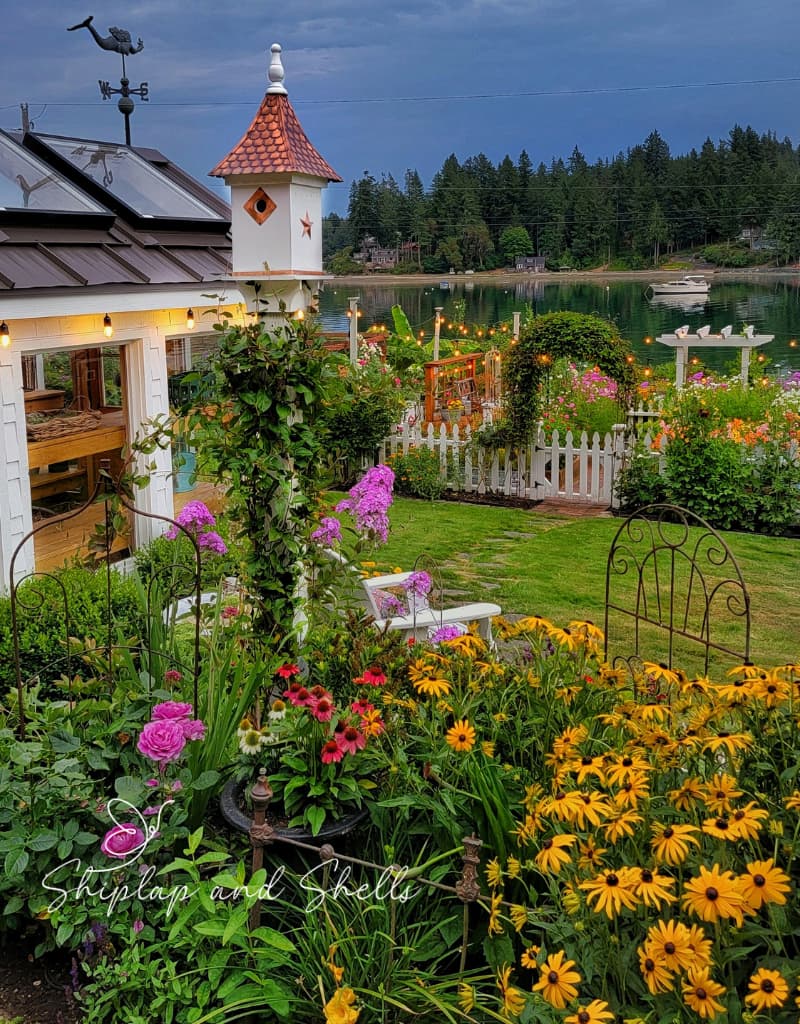
As an Amazon affiliate, I earn from qualifying purchases at no extra cost to you. My blog contains other affiliate links for your convenience as well. Click here to read my privacy policy.
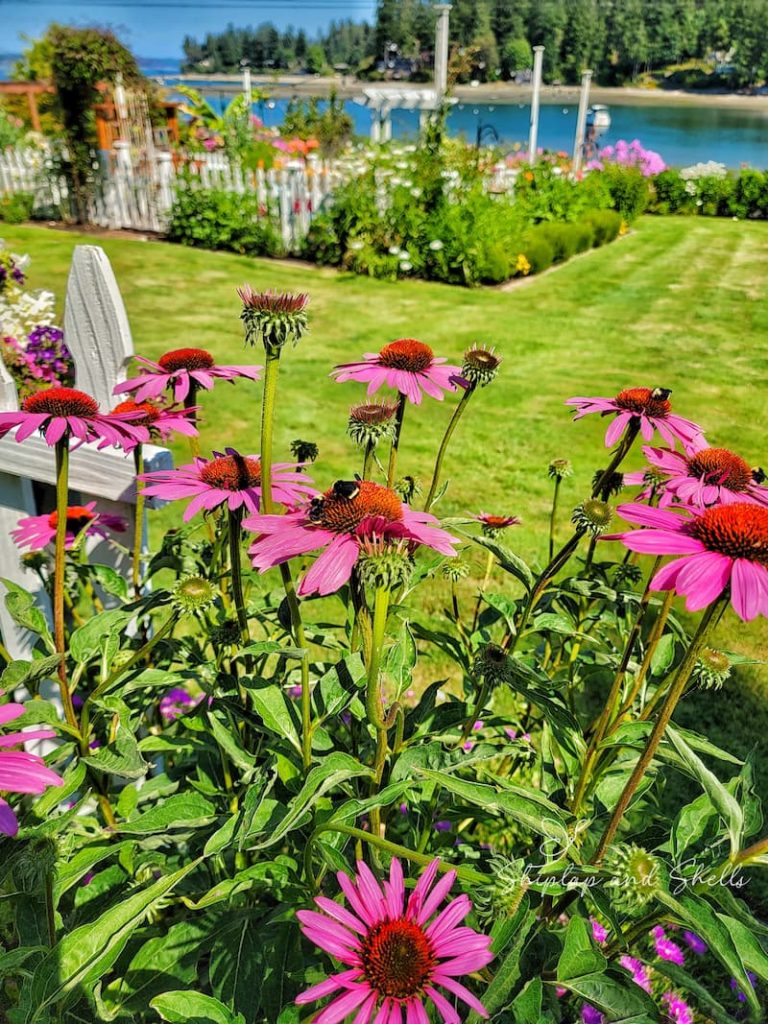
When we first moved into our beach cottage almost 11 years ago, I was new to gardening. I knew how to pull weeds by their roots and how to plant flowers in a window box. That was about it.
I had an idea of what kind of garden I wanted to create.
It had to be an informal, carefree, and relaxed outdoor space to enjoy. And that’s why I chose an old-fashioned cottage garden to grow.
Organized chaos is how I would best describe my cottage garden. The beds don’t have to be perfectly maintained, much like in a formal garden. You don’t have to have well-defined spaces. My garden is full of color and whimsy, where anything goes!
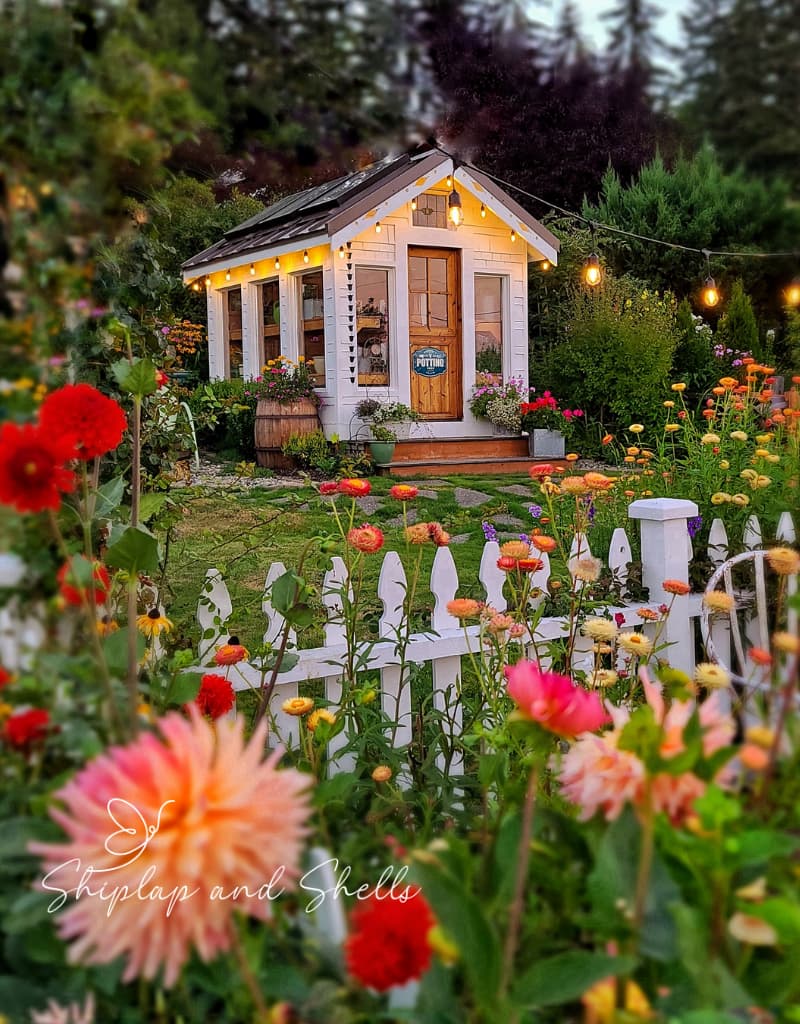
What is a Cottage Garden?
A cottage garden is a type of informal garden that originated in England in the late 10th century.
You will most likely find an abundance of flowering plants such as roses, daisies, foxgloves, sweet peas, lavender, and herbs in cottage garden-style growing spaces.
Focal points such as stone walls, bird baths, and white picket fences are also seen throughout this informal outdoor cottage-style space.
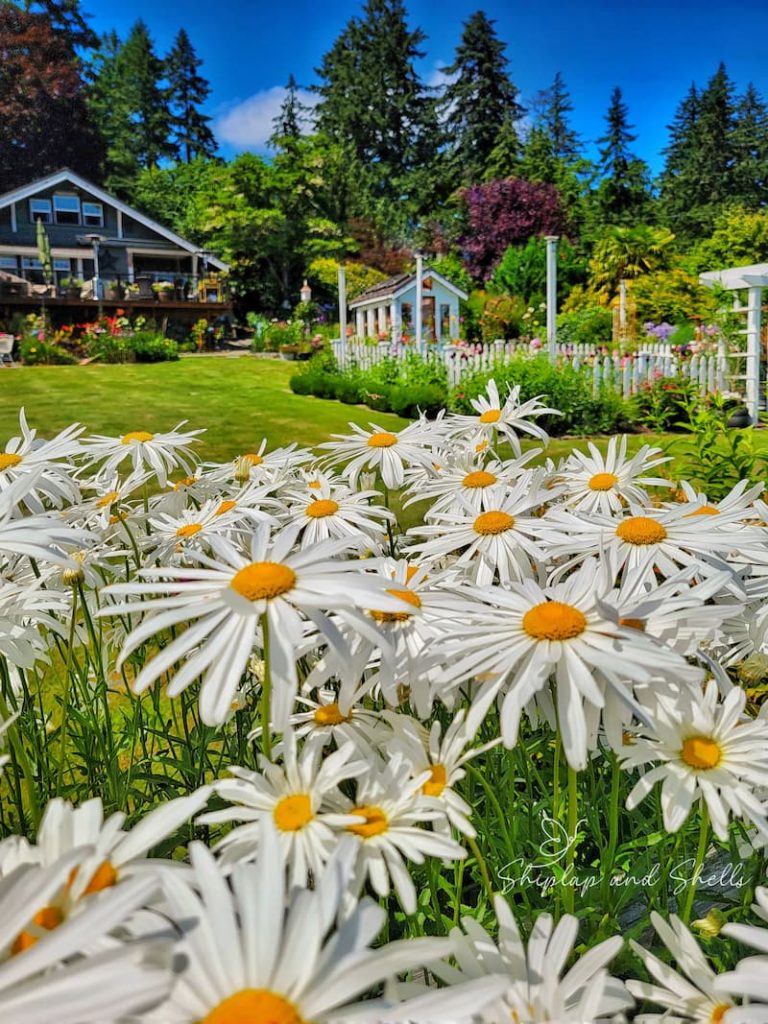
Advantages of Cottage Garden Design
You Don’t Have to Play by the Rules
One of the things I love most is that there are no rules when it comes to cottage gardening.
There are no worries about the spacing between plants. There’s no need to plan a certain gradual height the flowers should be planted.

Imperfection is Welcome in a Cottage Garden
A cottage garden exudes a natural, romantic, and charming environment while providing a rich habitat for wildlife such as bees, butterflies, and birds and vegetables such as tomatoes and beans.
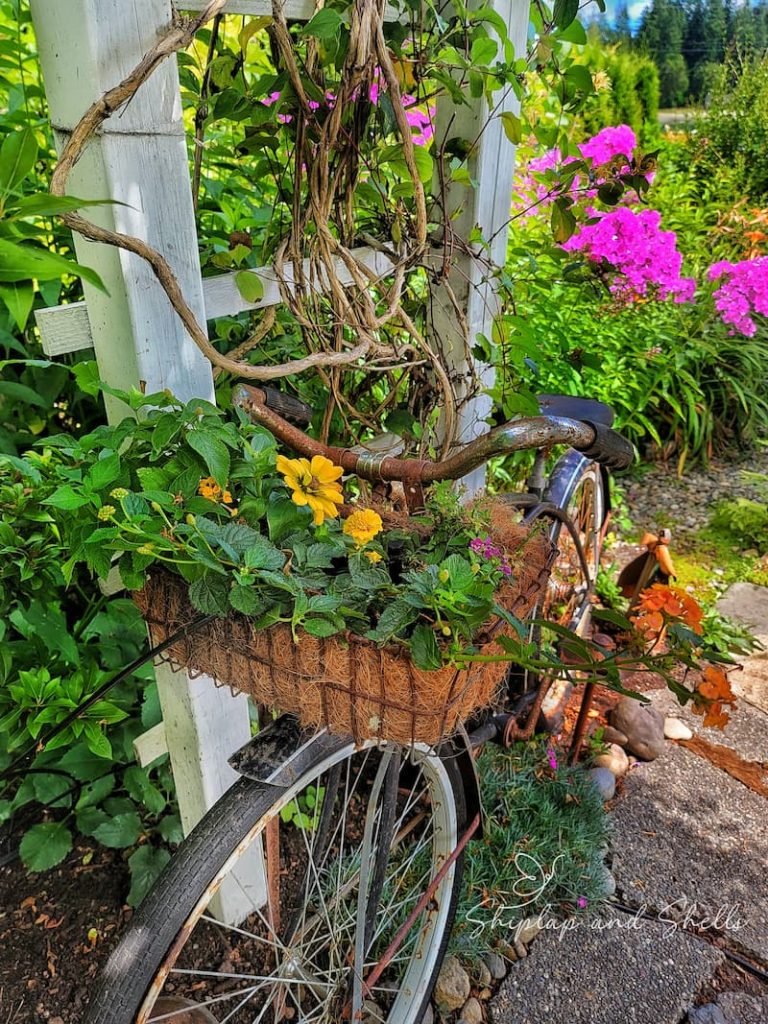
Cottage Garden Design is More Personal
No two cottage gardens are alike. You will never find another cottage garden like yours. And YOU will never have the same garden you had the year before.
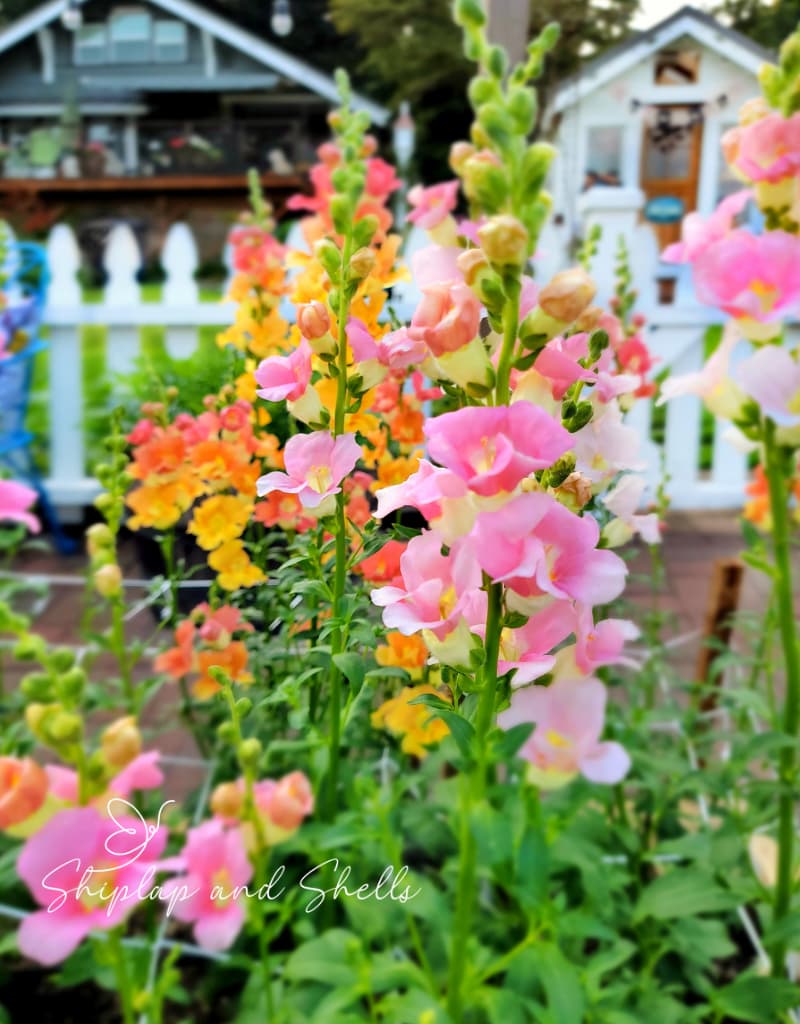
Cottage Gardens Can Be More Cost Effective
A cottage garden can be less expensive than a more formal one. By starting your garden cut flowers with seeds, you can start your garden with little expense.
As your perennials get bigger and more established, you’ll be able to divide them into clumps and plant them in other areas of your garden.
I don’t have to buy many plants at the nursery anymore unless it’s a fun spur-of-the-moment purchase. I shop in my own yard. Any self-sowing plants will also quickly fill in.
You will most likely spend most of your money on big-ticket items, such as rose bushes, flowering shrubs and trees, and evergreen shrubs. These are all smart investments and will make great anchors for your garden.
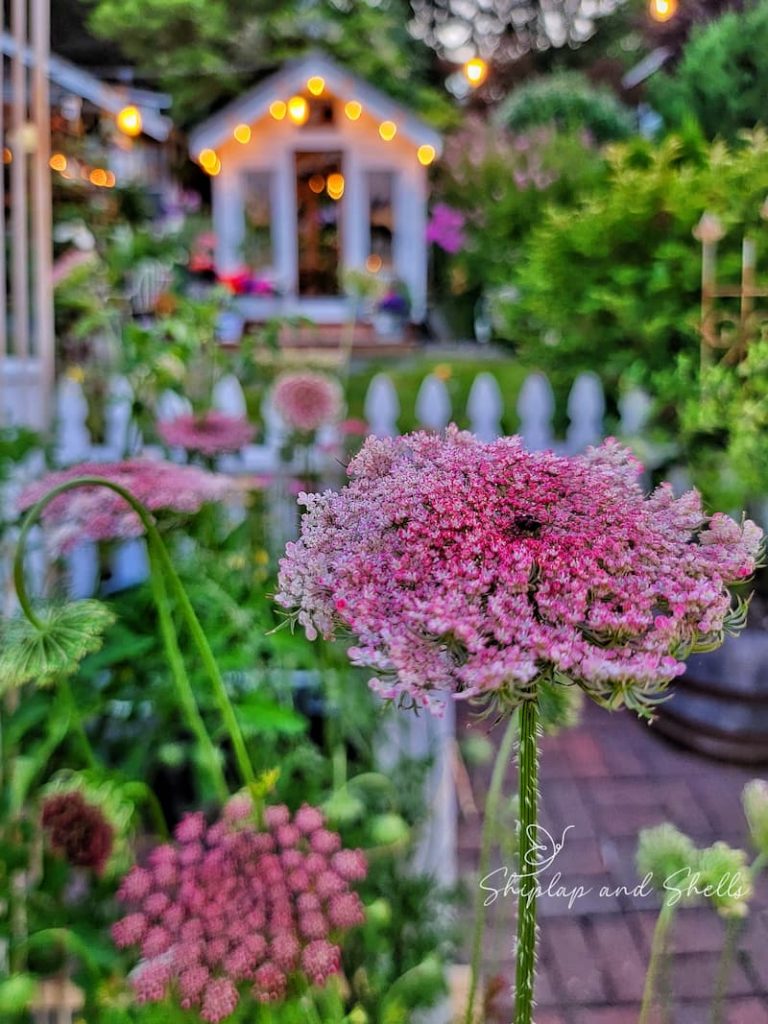
How to Plant a Cottage Garden
A cottage garden may appear to be effortless and spontaneous, but it does take planning and consideration when it comes to the type of plants you want to grow.
Here are some tips on how to plant a beautiful and thriving cottage garden.
Start Small, Start Slow
Don’t overwhelm yourself by trying to go big, right from the beginning. Start small, adding more plants each year to build a wonderful cottage garden.
This will not only save you from a lot of work at the beginning, but will allow you to get to know your garden, and add more plants as you learn what is working for you, or isn’t.
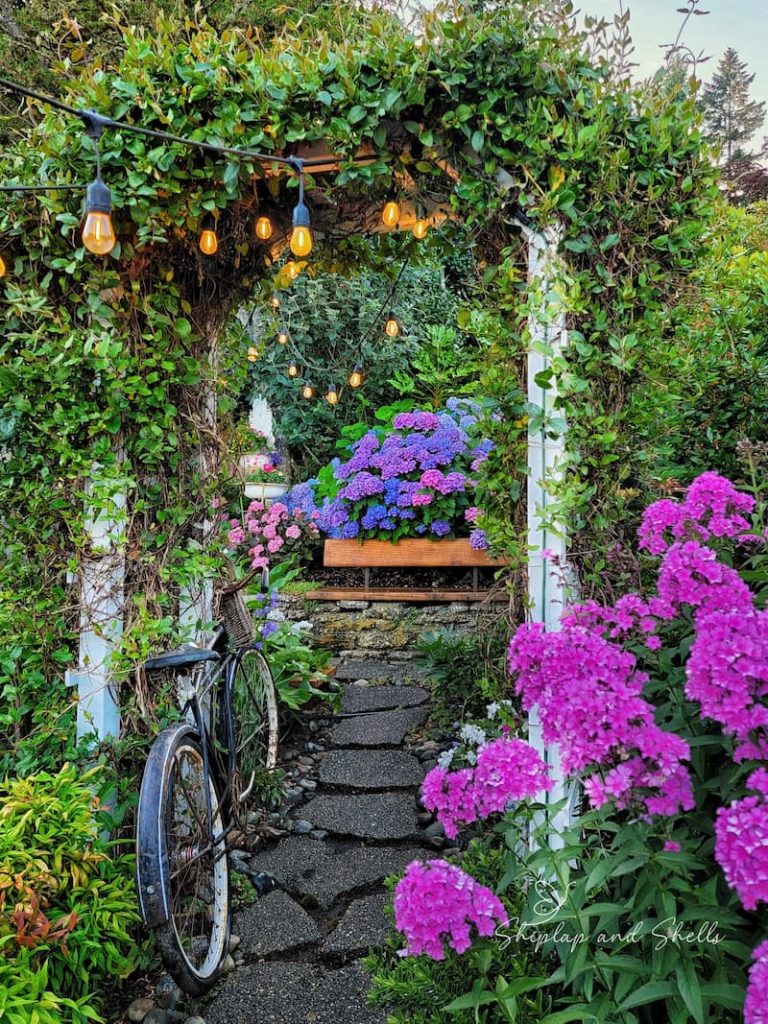
Cottage Garden Soil Quality
Do a soil test, and bring in rich, organic soil. I add fish mulch to my garden beds every year, but you can make your own compost as well.
There are several reasons for adding mulch to your garden beds.
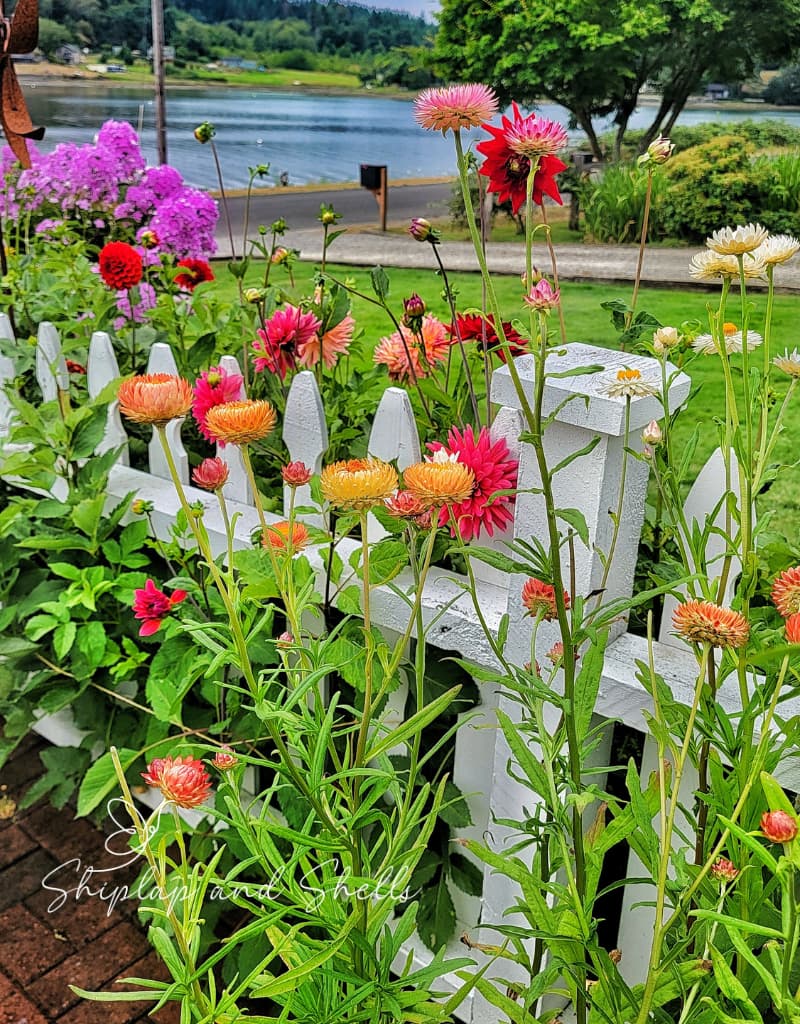
Watering Your Cottage Garden
Watering your garden can be made easier with an automatic watering system, like drip hoses and mini sprinklers. Using these will put the water at the base of the plant and not on the flowers or foliage.
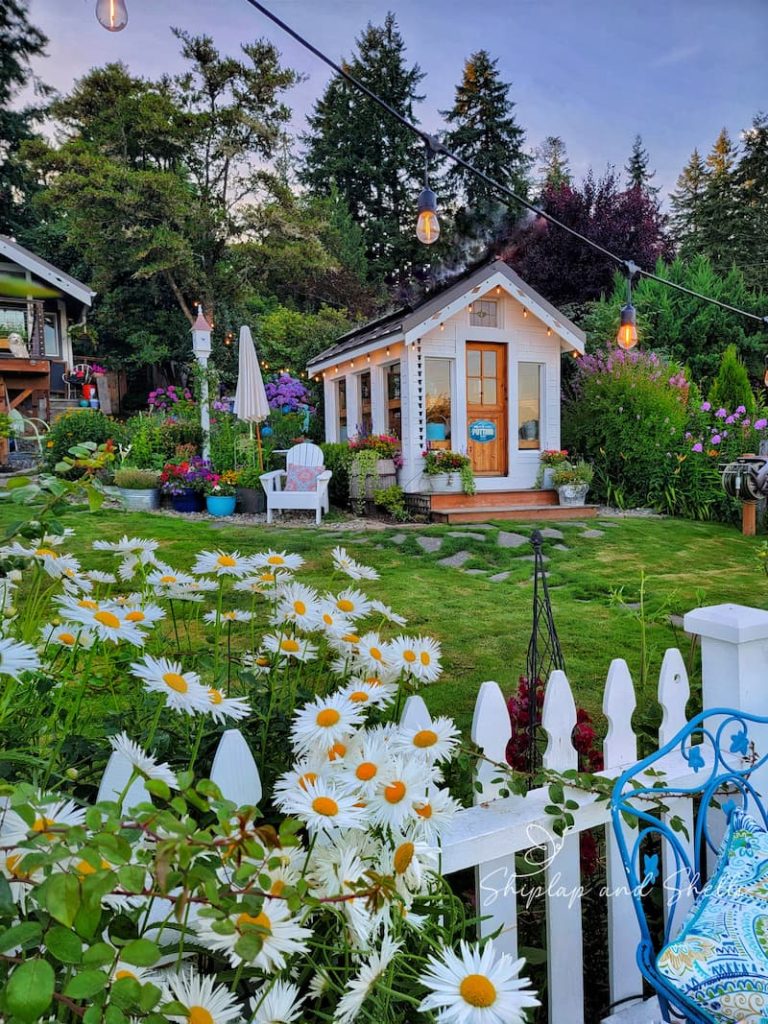
What are the Best Cottage Garden Flowers?
Plant a good mix of flowers, with varying colors, fragrances, and heights. Repeating the varieties of plants and colors will create flow and harmony in your garden.
Grouping border plants in masses rather than ones and twos can have an even greater impact. Add tall plants for visual interest and choose color themes for each garden bed.
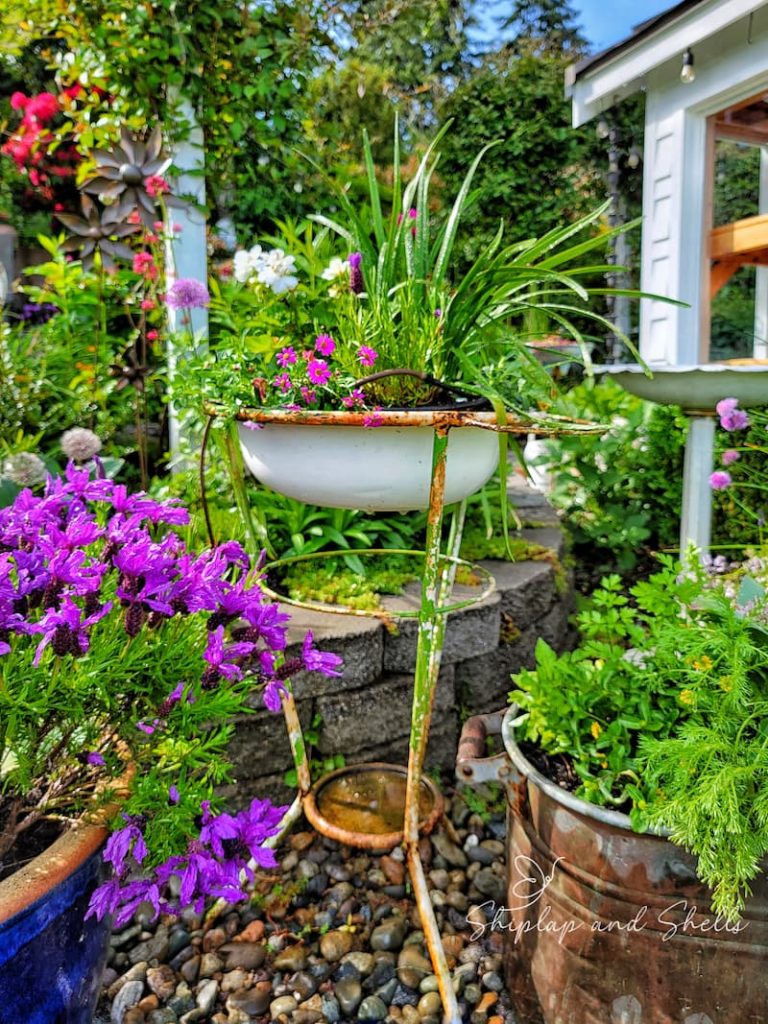
I grow a variety of annuals, perennials, small shrubs (deciduous and evergreen), vines, and small trees, throughout the garden. I also mix herbs and vegetables with cut flowers.
Here are some of my favorite cottage garden flowers:
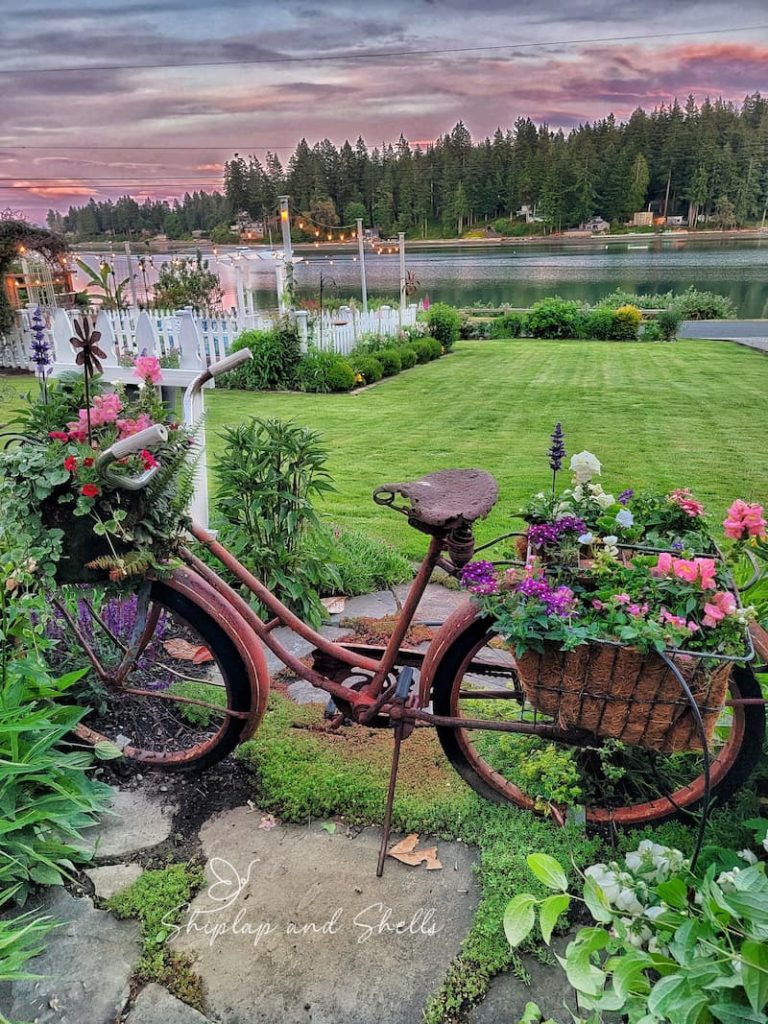
Cottage Garden Tips: Maintaining a Cottage Garden
A traditional cottage garden may appear whimsical and effortless, but maintaining it can be quite a bit of work.
Here are some of the maintenance items to work on throughout the growing season to keep your garden beautiful and healthy.
Divide Established Perennials
Self-sowing plants can get out of control. If you don’t divide your more established perennials every few years, they will become unruly, crowding out other neighboring plants, and could eventually die.
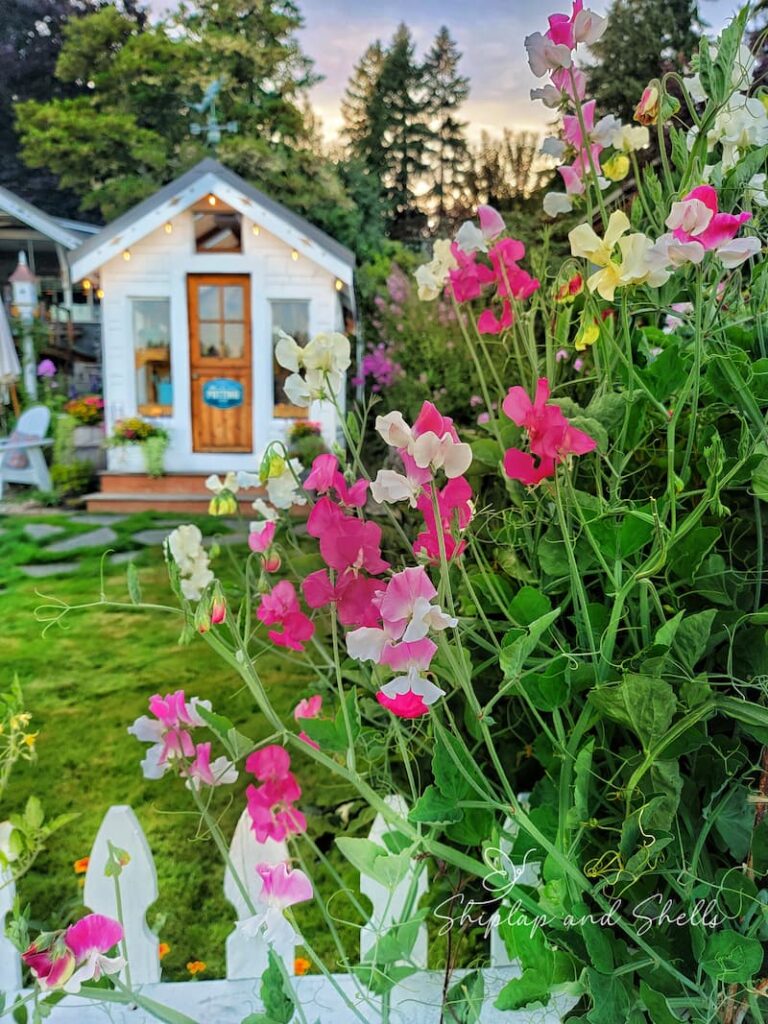
Deadheading in Your Cottage Garden
Deadheading, which is the process of removing dead or spent flowers of a plant, must be done throughout the growing season. This practice is important for the following reasons…
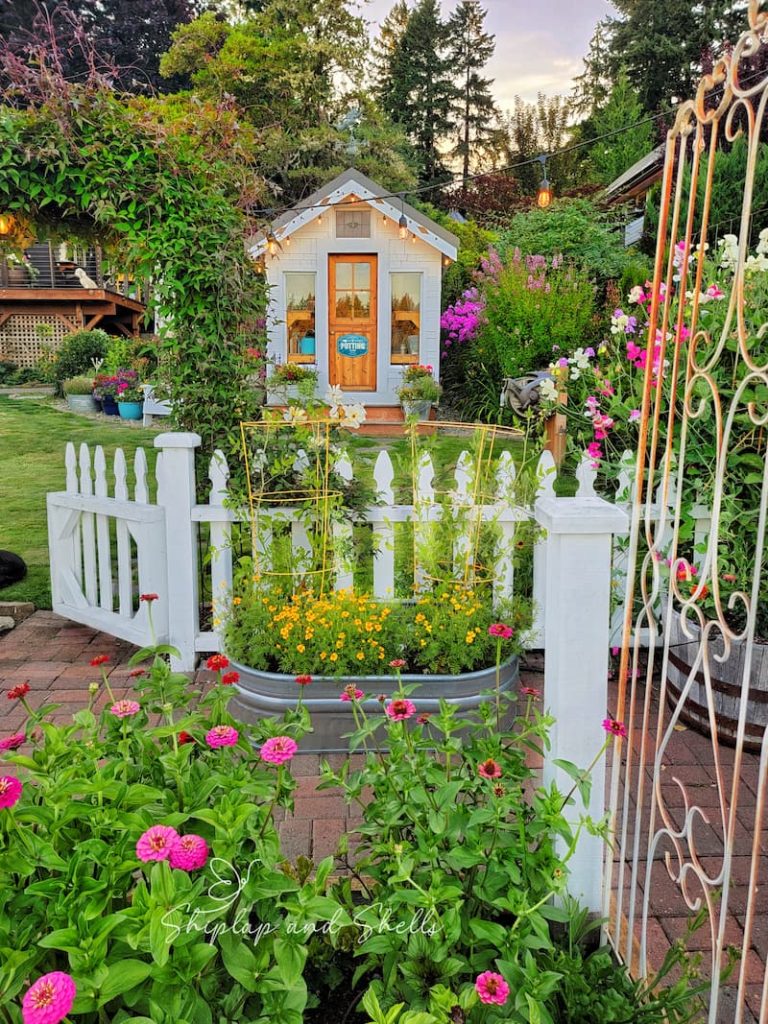
Pest and Disease Control
When it comes to maintaining a cottage garden, one of the biggest challenges can be dealing with pests and diseases.
Using chemical pesticides and herbicides can harm beneficial insects and disrupt the natural ecosystem of your garden.
There are many natural pest and disease control options you can use in your garden.
Companion Planting
This is when you grow certain plants together to create a natural pest control system. An example would be planting marigolds alongside vegetables to repel aphids and nematodes.
Organic Pest Control Products
Neem oil and insecticidal soap are made from natural ingredients and are safe for use around pets and children.
Weed Maintenance
If left unchecked, weeds can quickly take over your garden. They can compete with your plants for nutrients and water so they need to be regularly maintained.
Try to pull the weed by the roots as soon as you can. Weeding after a good rain or watering will make the soil softer and the weeds will be able to pull out easier.
Mulching your garden will help suppress weeds by blocking the sunlight and preventing them from germinating.
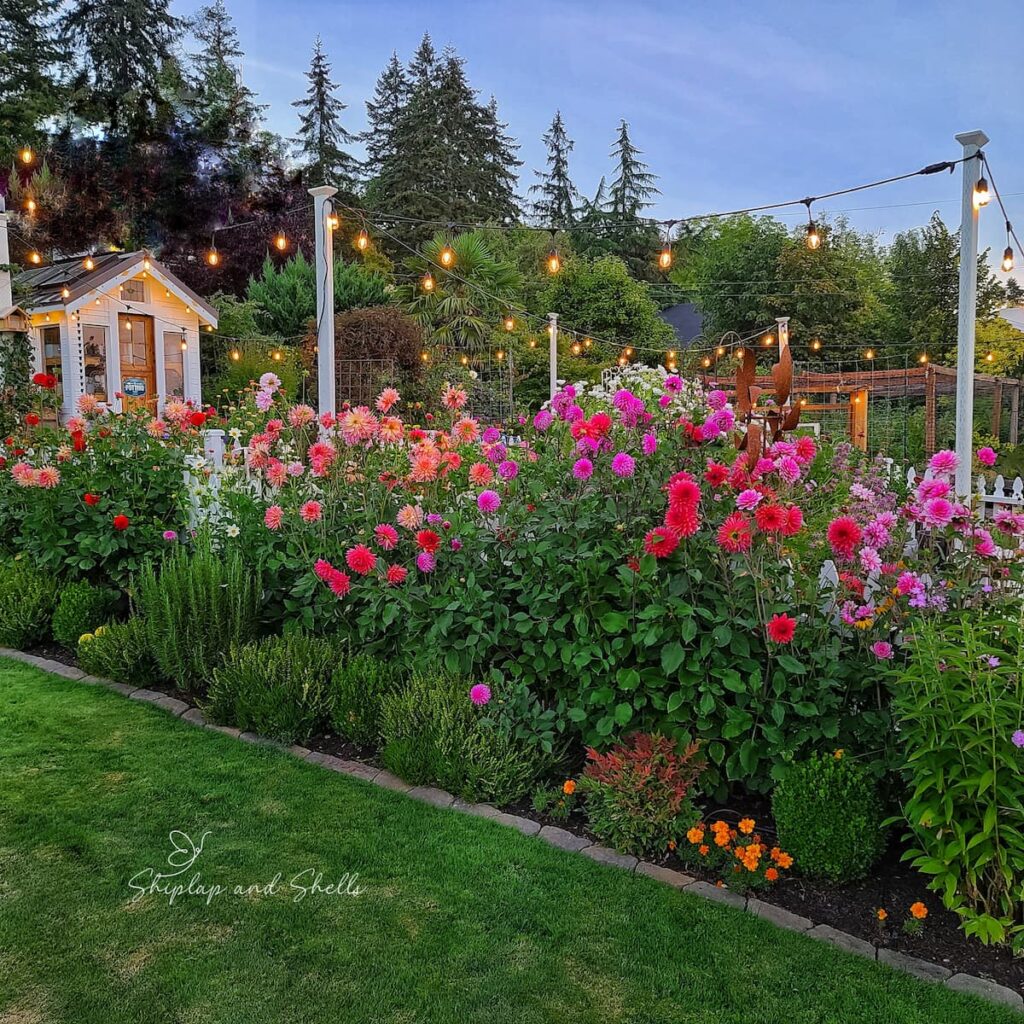
Add Visual Interest and Charm to Your Cottage Garden Design
One of my favorite cottage garden ideas is to share ways to create visual interest and charm in an outdoor space.
Cottage Garden Backdrops
There are many creative ways to create the perfect backdrop for your cottage garden. Rustic and picket fences, gates, and hedges are just a few options.
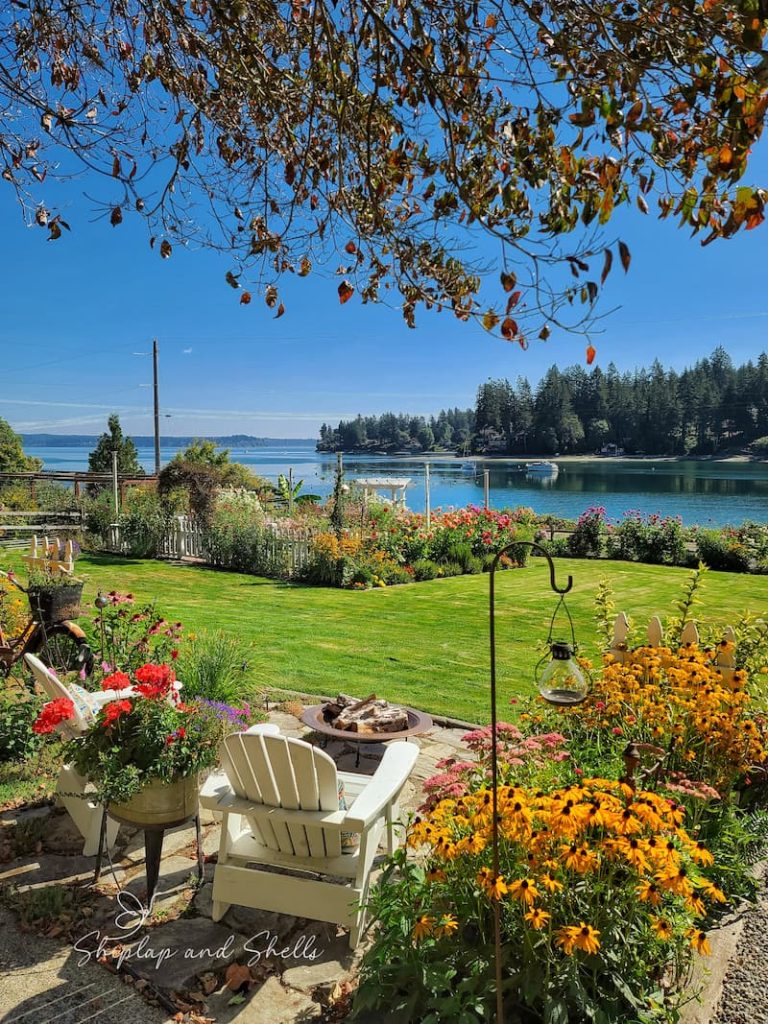
Creating an Intimate Garden Space
Create an intimate and special space in the garden by adding a seating area under a tree or wisteria arbor.
Pergolas with a dining table or hammock underneath create a romantic setting.
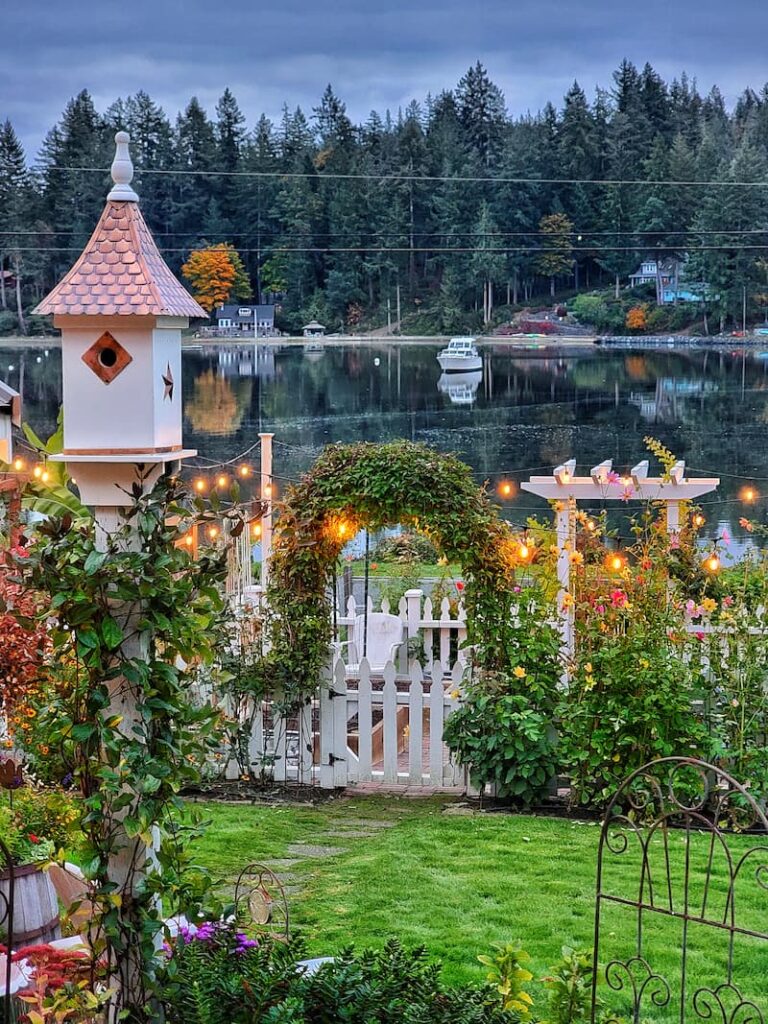
Garden Structures
Structures such as vine-covered arbors, arches, and trellises can be used to accent doorways, gates, seating areas, and other elements.
Using these structures in combination with fencing will give a vertical aspect to the garden.
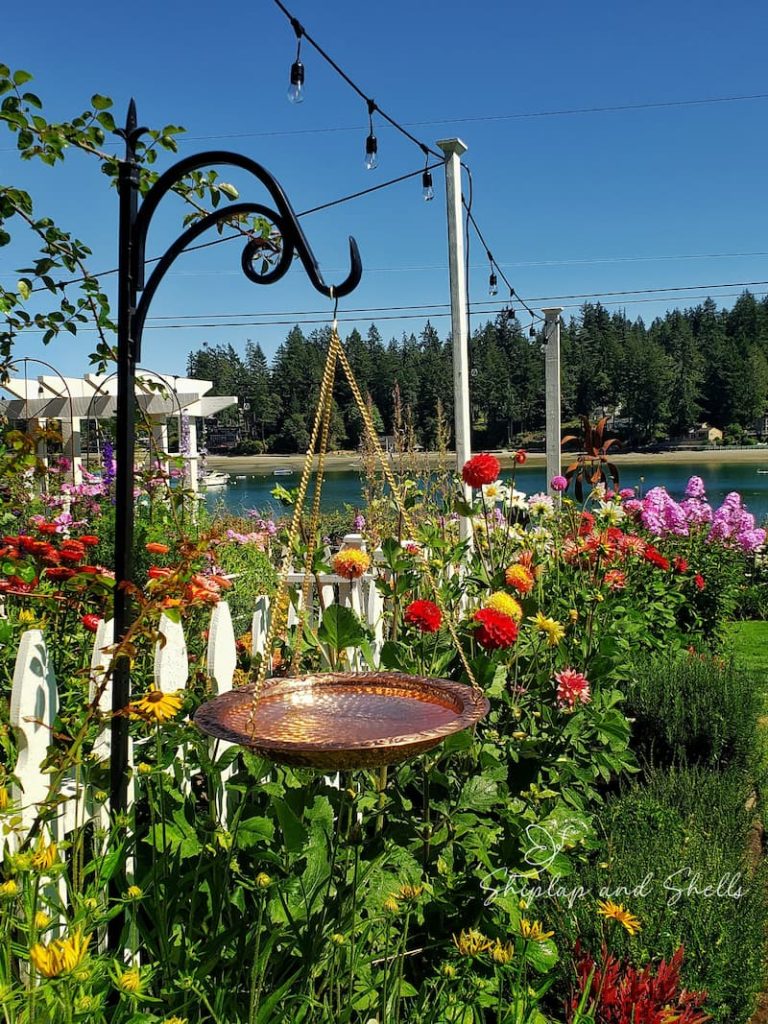
Finishing Touches for a Strong Impact
How do you bring your garden to life?
By bringing finishing touches into the garden such as birdbaths, vintage bikes, wagons, and wheelbarrows. Vintage containers full of flowers make a strong impact on any garden.
Growing Shrubs for Year-Round Interest
Boxwoods and other evergreen shrubs are great to use for year-round interest. Plant ground cover to add detail and texture while suppressing weeds and reducing maintenance.
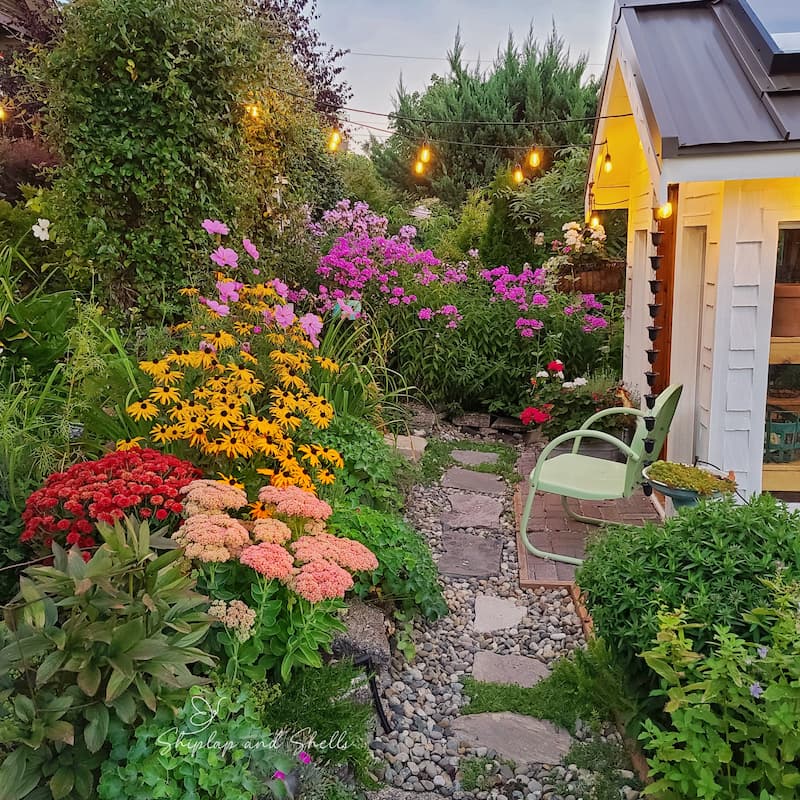
Creating Cottage Garden Pathways
Informal paths are typical of a cottage garden. They can be made out of brick, gravel, flagstone, wood chips, or even grass. Create curved and winding pathways, and allow your plants to spill onto these paths.
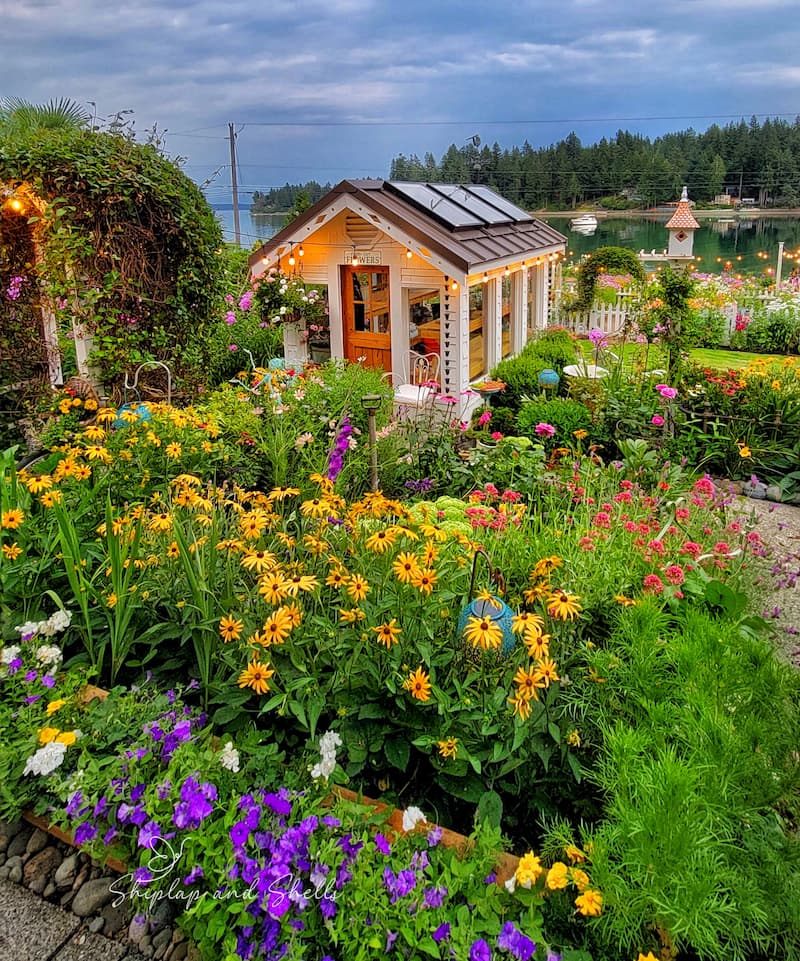
Creative Places for Your Flowers to Grow
Overflowing window boxes add instant charm to your garden. I place containers full of flowers mixed in with the garden beds for more variety and interest.
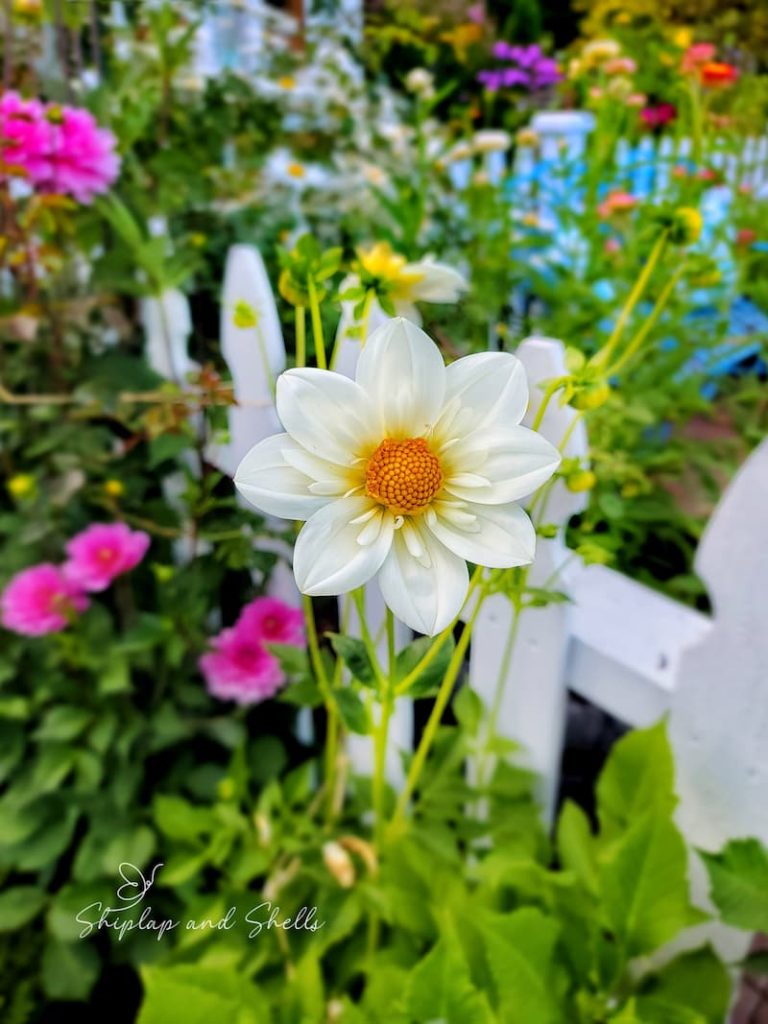
If you’re thinking of creating a cottage-style garden full of vibrant colors, eclectic varieties of flowers, and plants with an “anything goes” vibe, I hope some of these cottage garden design ideas have inspired you.
Whether you have a small or large growing space, you can create a unique and carefree garden style that reflects your personality and brings you happiness.
If you have any questions or additional suggestions, please share them in the comments below. And be sure to share this blog post link with anyone who may find these gardening tips useful.
Until next time,
Happy Gardening!

I’m a self-taught hobby gardener. Everything I share on my blog is my opinion and what has worked for me.
Follow Me for More Inspiration
Shop my Amazon Storefront, LTK sources, and my favorite home decor, garden, and lifestyle products. When you purchase from one of my links, I earn a small commission, which helps me continue sharing all the content you expect on my blog.
Be sure to follow me on Pinterest, Instagram, Facebook, TikTok and LIKEtoKNOW.it. Do you like gardening? Join my Facebook Gardening Tips & Tricks group.
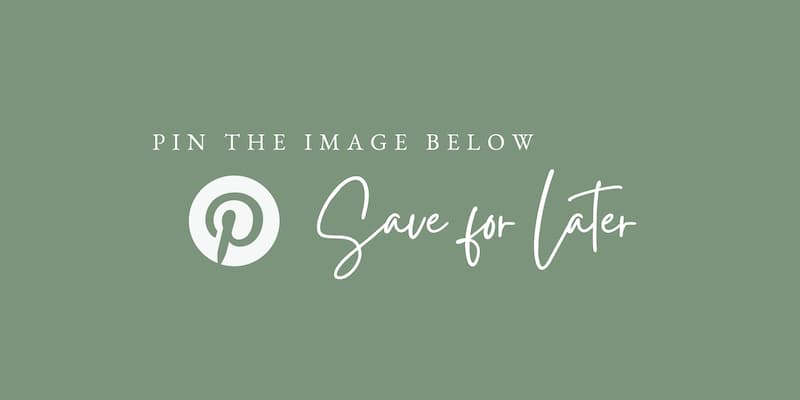
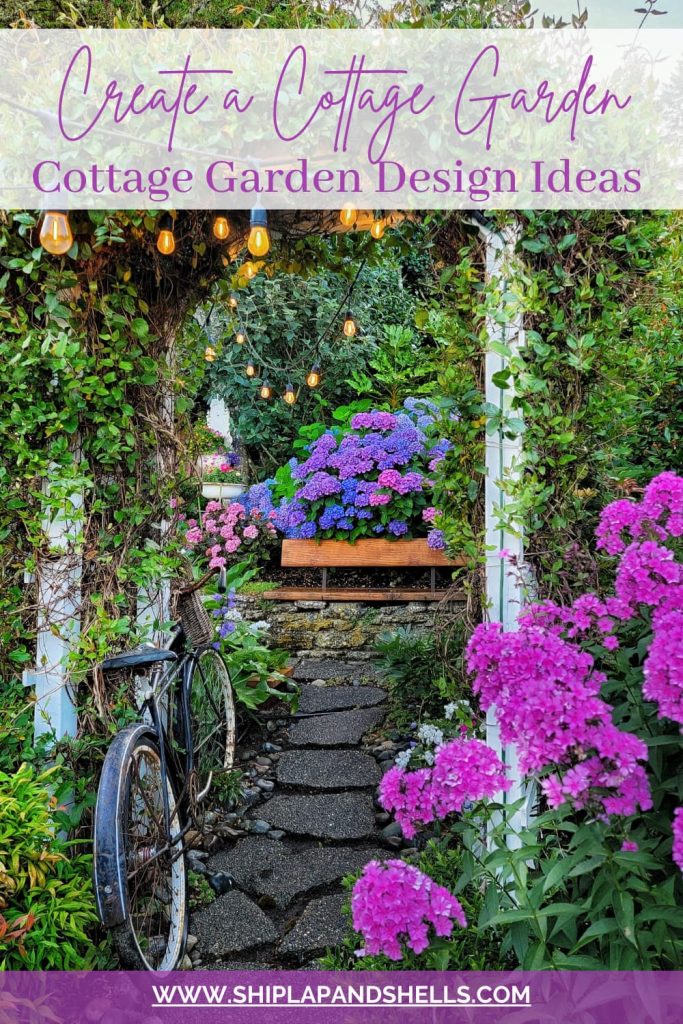
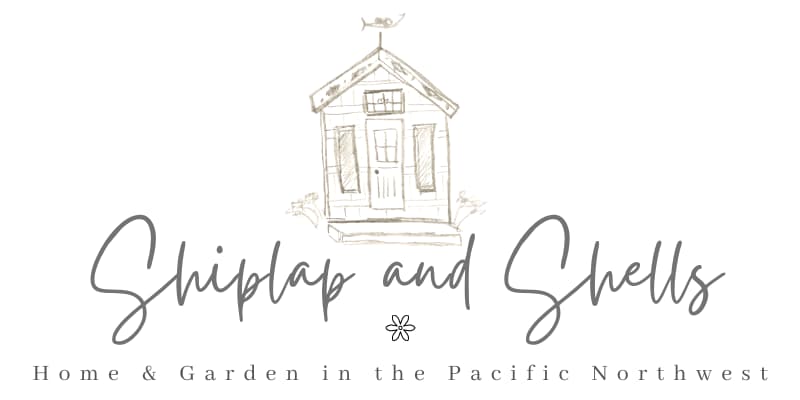

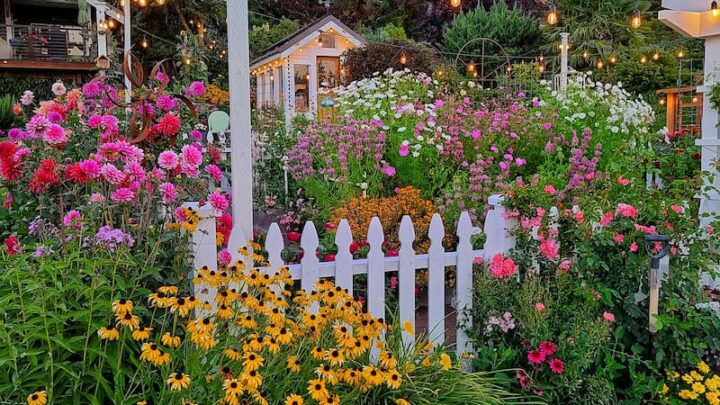
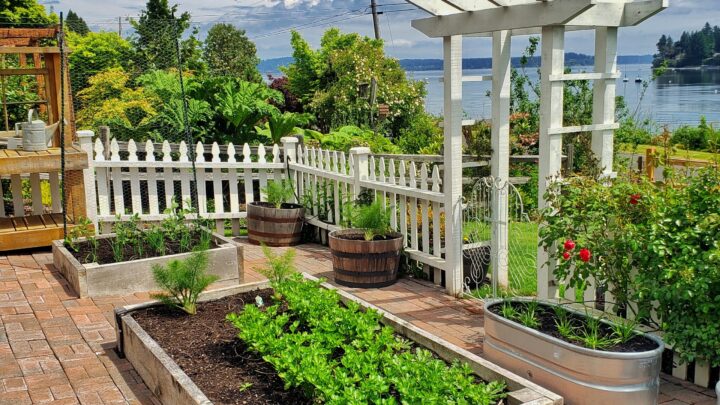
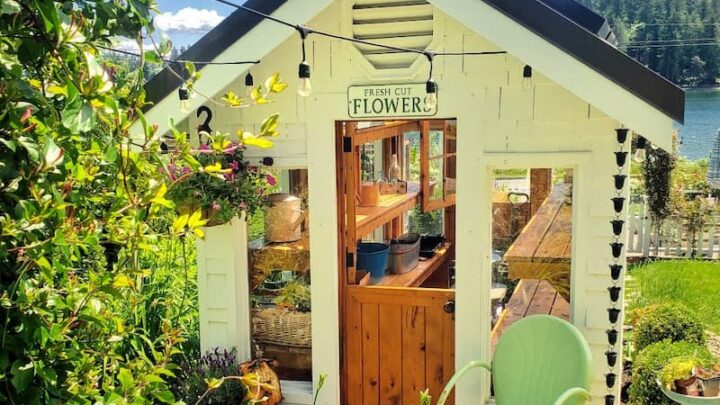
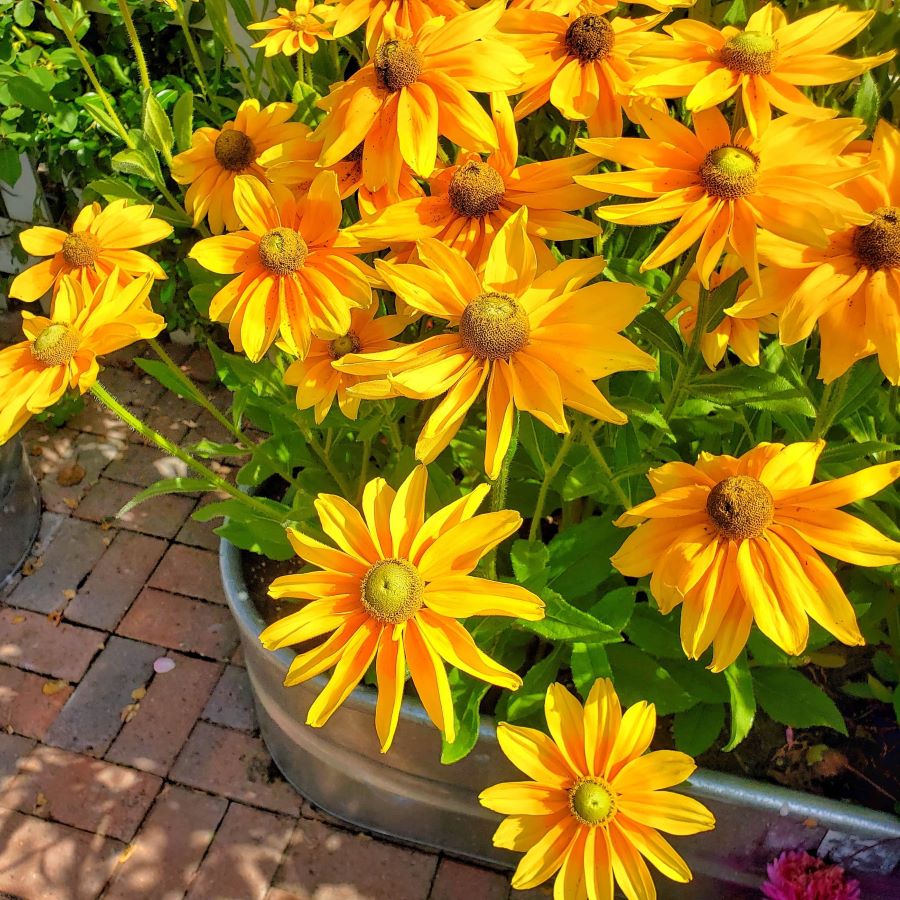
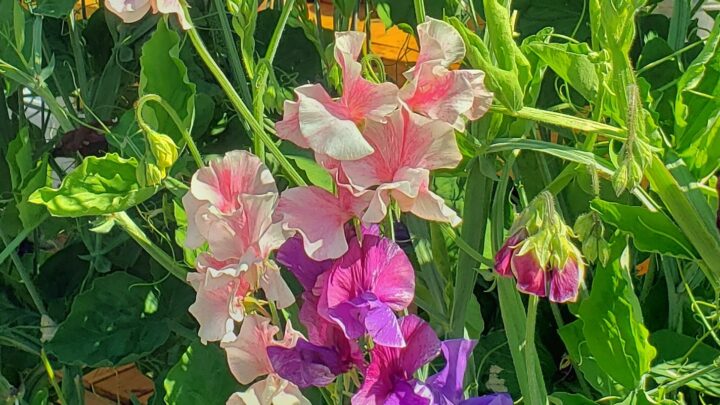
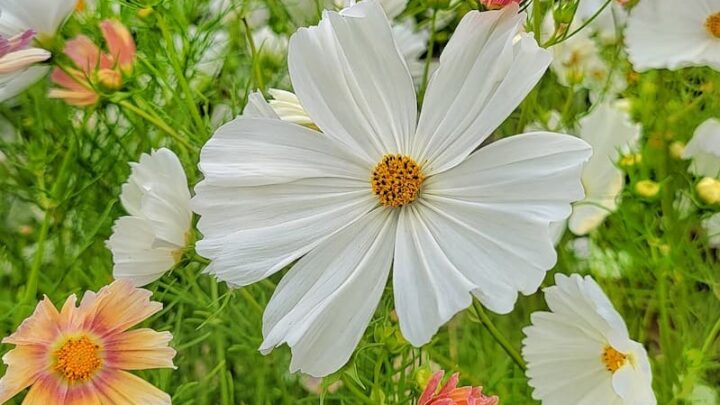
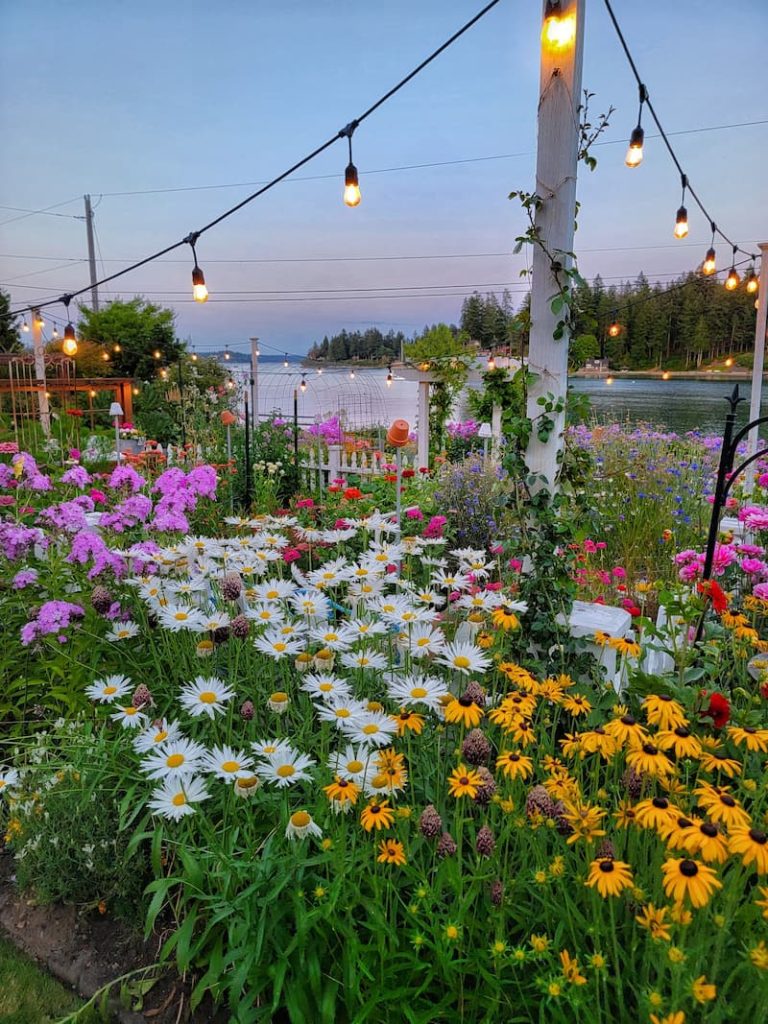
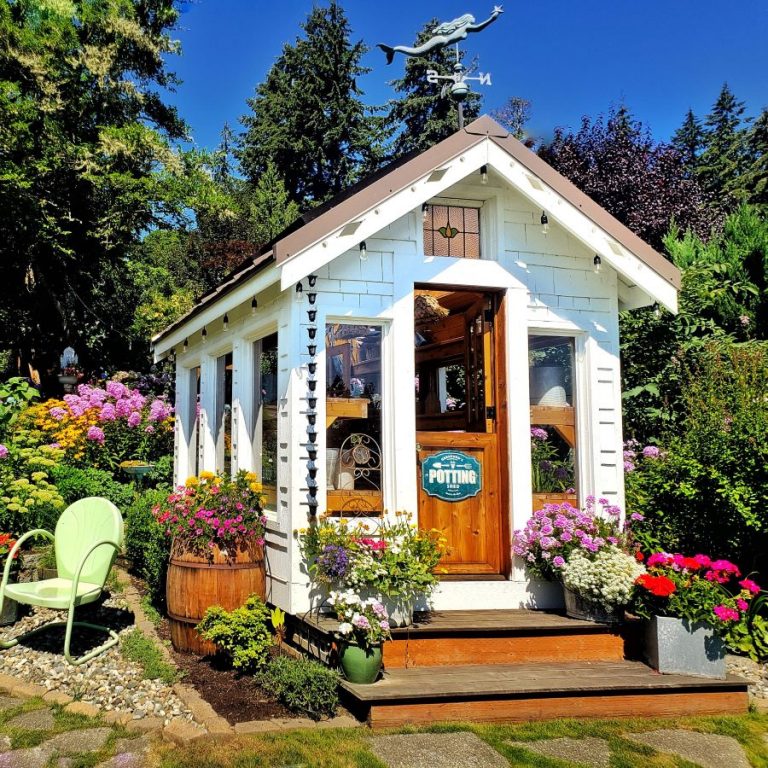


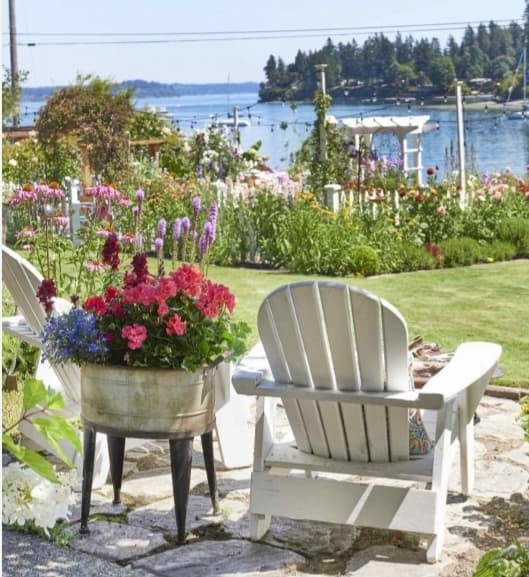
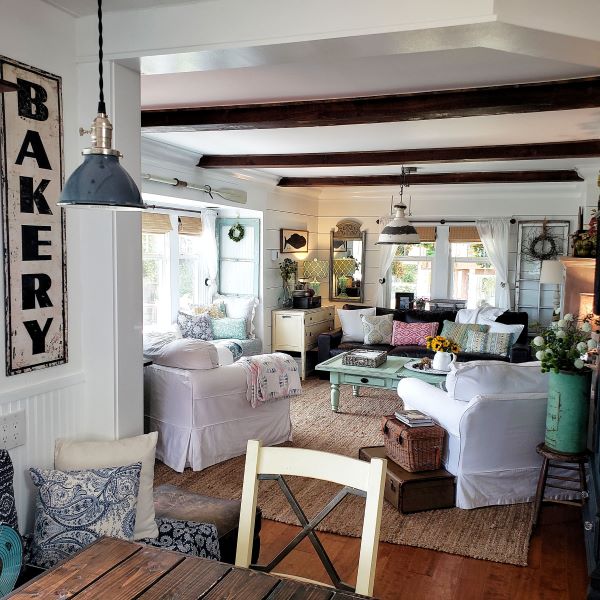
Kim
I love all your great tips. Everything is so beautiful and you amaze me.
All the photos are gorgeous and of course the garden itself is the coziest place to rewind and spent surrounded by the beautiful blooms. That looks like a beautiful neighborhood to live in, Washington State.
These photos are stunning! I am currently working on designing my garden for the summer. We are a little bit late but we are hoping that we can landscape our yard this summer and have it ready by next summer. We have the dumpster rental and everything and we are all ready to go. I will definitely be pulling inspiration from these photos.
Thank you so much! And good luck to you and the landscaping you’re working on. I’m sure it will be beautiful.
Your gardens are always so pretty Kim! They get better and better each year!
That’s such a wonderful compliment coming from you Stacy. Thank you!
Thank you so much for sharing your best gardening tips and tricks with us, Kim! As I’ve shared before we don’t even live on the same side of the country nor do we live in the same zone but I am incredibly thankful that you share what has worked for you so we can try it in our zones too. Your gardens are always such a beautiful and peaceful place to relax and unwind. Every time I look at your pictures I think what an amazing love letter to all the families and friends that walk or boat past your house and are inspired to plant something at their house as well. Sending you big hugs and thank you for this. I’m going to share it this Friday, CoCo
Thank you for the sweetest comment CoCo. You made my day! It warms my heart to know that you appreciate my garden and the tips I share. Thank you for sharing my post on your blog my friend. Hugs right back at you!
Kim, your cottage gardens are my absolute favorite! What a beautiful job you have done! Well done my friend!
Thank you so much, Kim. I really appreciate the kind words.
Your gardens are beautiful Kim. and I love all of the vintage treasures you have here and there.
Thank you so much, Wendy. Sine I don’t have much room left in my small cottage I’ve decided to fill the garden now.
It’s beautiful. I can see you’ve worked very hard over the years. Last year my husband and I moved into a small second floor apartment just above my mum’s first floor apartment. She’s 85 now and it’s nice that we can be close-by. My mum and I have been creating a garden. We live in the old town area of a tiny seaside town in Massachusetts right on the harbour. Our garden area is much smaller so we will be using many of the same flowers but in a smaller scale.
So mice to meet you Kara! It’s really nice that you can be close to your mom in the apartment. I’m so happy that you are creating a garden together! Thank you for stopping by! Nice to meet you!
I also live in Washington. I love your gardens. They inspire.
Hello fellow Washingtonian! I’m so glad you find inspiration form my garden. That just makes my day!
Love love love it! Your gardens are gorgeous!
Thank you Stacy! I feel the same about yours!
Great ideas Kim! We’ve been planning to redo our tiny city yard for 16 years now, and we’ve decided this is the summer for it! I love your beautiful gardens and am taking your advice to heart! Thanks for your ever inspiring and entertaining posts! ?
Thank you so much Barbara. I can’t wait to see what you do with your yard. You are going to have so much fun!